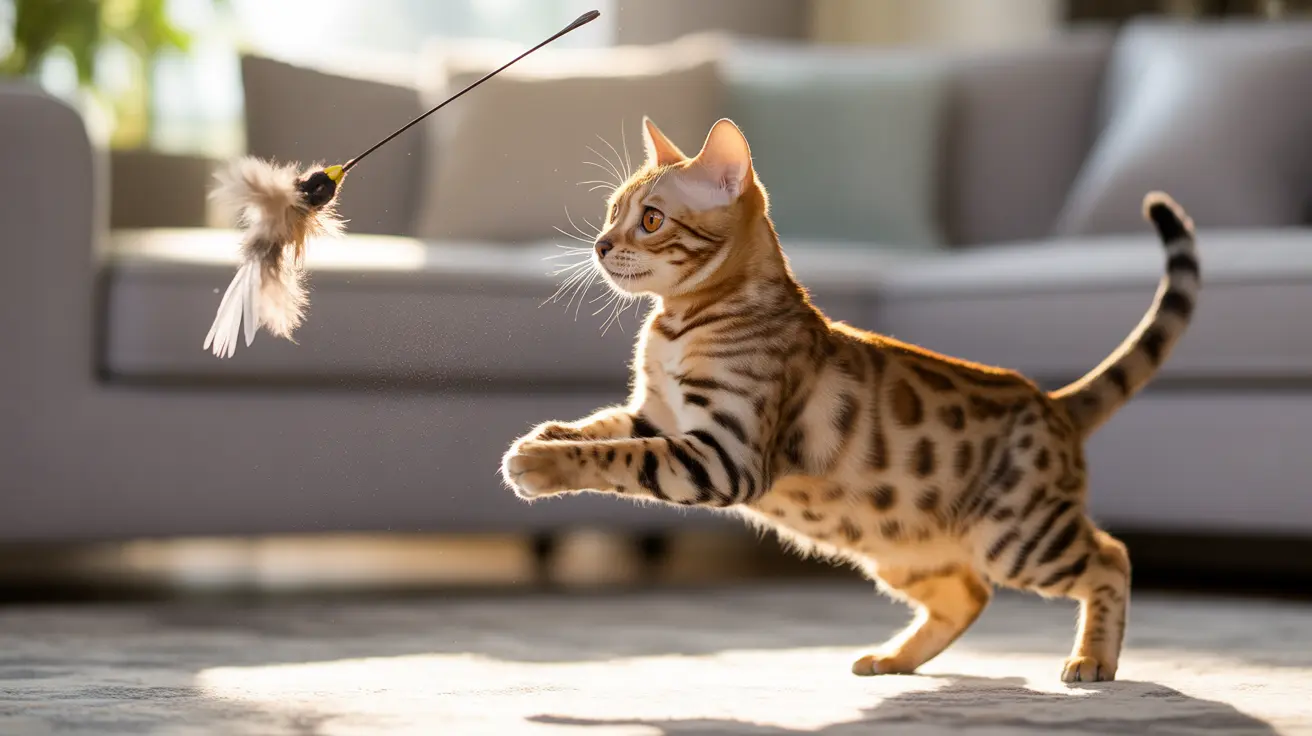Understanding Your Cat's Natural Play Drive
Cats are crepuscular animals, meaning they're most active during dawn and dusk. This evolutionary timing aligns with when their natural prey would be most active. Indoor cats retain these instincts but lack the outlet of actual hunting, which often translates into increased play behavior.
Your cat's desire for frequent play sessions isn't just about physical exercise—it's about meeting crucial mental and emotional needs. Play helps cats:
- Practice hunting skills
- Release pent-up energy
- Bond with their human companions
- Maintain physical and mental health
- Express natural predatory behaviors safely
Creating an Effective Play Schedule
Rather than responding to every play request, establish a consistent routine that meets your cat's needs while maintaining boundaries. Aim for 2-3 dedicated play sessions daily, each lasting 10-15 minutes.
The most effective schedule typically includes:
- Morning session (around dawn)
- Evening session (before dinner)
- Pre-bedtime session (to tire them out)
Choosing the Right Types of Play
Different types of play satisfy different hunting instincts. Incorporate various play styles to provide complete enrichment:
- Interactive wand toys (simulating flying prey)
- Rolling toys (mimicking scurrying animals)
- Puzzle feeders (engaging problem-solving skills)
- Kicker toys (allowing safe wrestling)
Managing Excessive Play Behavior
If your cat's play drive seems unusually high, consider these management strategies:
- Rotate toys regularly to maintain interest
- Provide environmental enrichment (cat trees, window perches)
- Use food puzzles to engage hunting instincts
- Install vertical spaces for climbing and exploration
Signs of Healthy vs. Problematic Play
Understanding the difference between normal play behavior and potential issues is crucial. Healthy play includes:
- Relaxed body language
- Taking breaks
- Responding to your cues
- Using soft paws (retracted claws)
Warning signs of overarousal include:
- Dilated pupils
- Thrashing tail
- Skin twitching
- Excessive vocalization
Frequently Asked Questions
Why does my cat want to play all the time and how can I manage it effectively?
Cats want to play frequently due to their natural hunting instincts and need for mental stimulation. Manage this by establishing regular play sessions, providing environmental enrichment, and using interactive toys that simulate prey.
How can I tell if my cat's constant play is normal or a sign of play aggression?
Normal play involves relaxed body language, taking breaks, and gentle interactions. Play aggression shows through dilated pupils, thrashing tails, and aggressive behavior like hard biting or scratching.
What are the best ways to provide interactive play that prevents overstimulation in my cat?
Use wand toys to keep distance, schedule multiple short sessions throughout the day, and watch for signs of overstimulation. End sessions before your cat becomes too excited.
How can I create a daily play routine that satisfies my cat's hunting instincts safely?
Schedule 2-3 daily play sessions using various toys that mimic different prey types. Include both active play and puzzle feeders for mental stimulation.
What should I do if my cat's play turns into biting or scratching during playtime?
Immediately stop play when biting or scratching occurs, redirect to appropriate toys, and never use hands as toys. Consider shorter play sessions and ensure your cat has appropriate outlets for energy.






